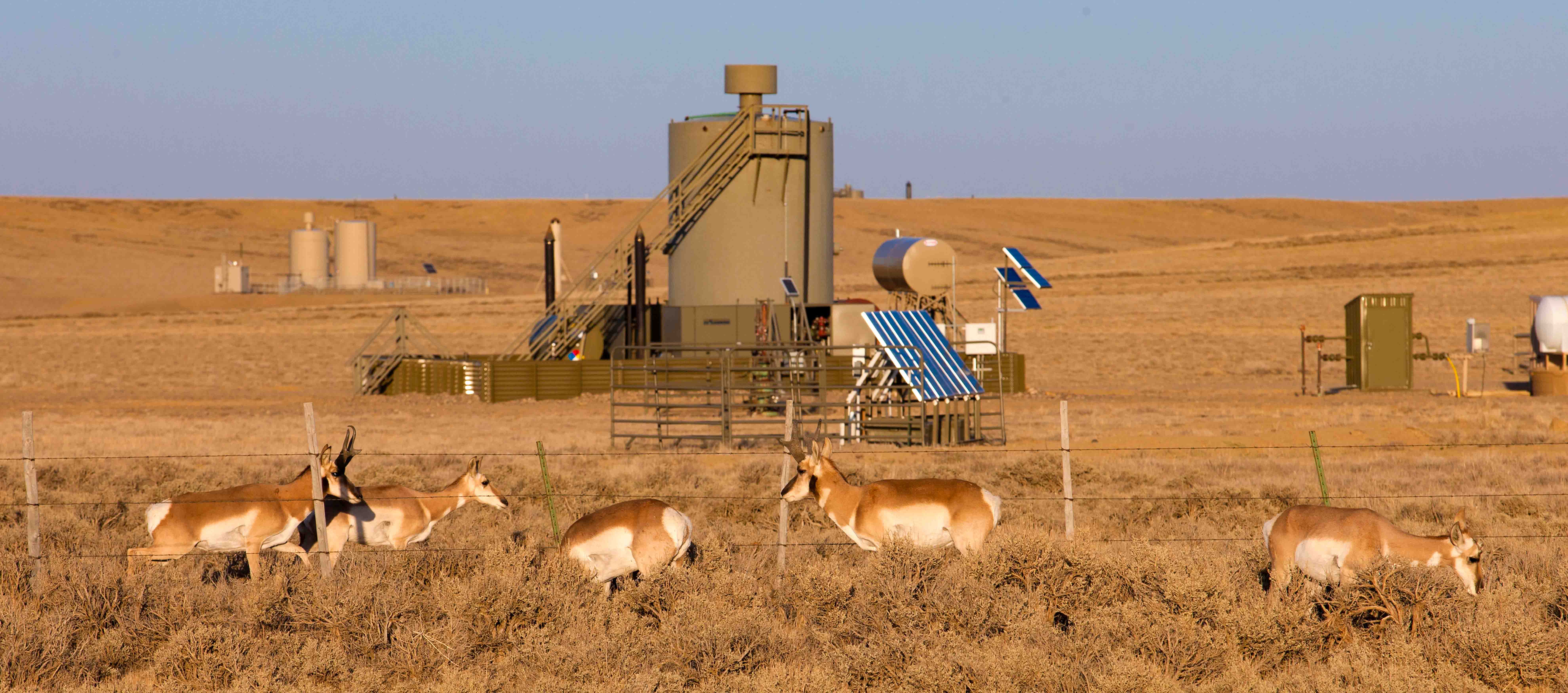The dividing line between the private and public capital markets has blurred for upstream oil and gas companies in need of financing. This new reality is reshaping the world of private capital, private equity providers and the producers they back.
At the same time, the onshore U.S. upstream industry is experiencing a fundamental reorientation as consolidation alters the landscape. Upstream operators looking to grow and thrive in such an environment must contend with these realities with a financing toolkit that is itself being reforged.
Private and public capital sources
The public market has been relatively closed to new upstream issuances, with a handful of initial public offerings (IPOs) filed by onshore U.S. E&Ps during the last four years. But that doesn’t mean the public markets haven’t been a source of capital for private upstream companies.
“[Private producers have] largely accessed capital markets by being bought,” said Jeff Nichols, partner with Haynes and Boone.
Several companies appeared poised for public offerings in recent years, but most of them were swept up in the recent consolidation wave.
Colgate Energy Partners was widely expected to file an IPO in 2022, but ended up merging with publicly traded Centennial Resource Development. The $7 billion “merger of equals” transaction created the largest pure-play E&P in the Delaware Basin. The pro forma company adopted a new name, Permian Resources, and within a year returned to growth mode.
Colgate’s founders and co-CEOs, Will Hickey and James Walters, retained their roles at the new E&P, and Centennial CEO Sean Smith became executive chairman of the board.
Under their leadership, Permian Resources bought Earthstone Energy in 2023 in a $4.5 billion deal that increased the independent’s leasehold to more than 400,000 net acres and its production to 300,000 boe/d.
Earthstone, backed by EnCap Investments and Post Oak Energy Capital, had itself previously rolled up a number of portfolio companies in the Permian.

“Like all the other private equity investors, we have been an active participant in the consolidation,” said Frost Cochran, founding partner and managing director of Houston-based Post Oak.
Post Oak invested in Earthstone in 2022 through a $280 million private investment in public entity (PIPE). Cochran now serves on the board of Permian Resources.
As a result of all the portfolio companies that have been rolled up into Permian Resources, more than one-quarter of Permian Resources is controlled by a quintet of private equity firms: Pearl Energy Investments, EnCap Investments, Riverstone Investment Group, NGP Energy Capital Management and Post Oak.
Riverstone Energy Ltd. (REL), a publicly traded affiliate of Riverstone, has given some insight into the payoff: its investment has generated a multiple on invested capital (MOIC) of 1.51x from its share of the Permian Resources investment.
Post Oak has also ended up holding stakes in other private companies. The firm is a large shareholder in SilverBow Resources, said Cochran, adding, “There’s been a lot of drama around that company.”
Earlier this year, Eagle Ford-focused SilverBow was actively pursued by Kimmeridge Energy Management, a private equity firm with an activist strategy. Kimmeridge made several acquisition overtures but ultimately withdrew its bid in April. In May, Crescent Energy made SilverBow a $2.1 billion buyout offer to create the second-largest Eagle Ford Shale operator.
Crescent Energy is itself a publicly traded acquisition vehicle. In late 2021, KKR merged its Independence Energy with Contango Oil & Gas to form Crescent Energy. The company focuses on low-decline production and holds large positions in Texas, primarily the Eagle Ford, and in the Rockies, primarily in the Uinta Basin, which has become increasingly competitive.
KKR includes Crescent Energy within the infrastructure segment of its business, which globally holds $61 billion of assets under management. KKR maintains a 15% stake in the company and Chairman John Goff holds 5%, according to company filings. The head of KKR’s energy real assets business, David Rockecharlie, serves as Crescent Energy’s CEO. KKR is itself publicly traded.

RELATED
Asset-backed Securitization Emerges as Growing Finance Opportunity
Opportunities, risks
Private equity’s foray into the public markets has been enabled by the historic consolidation trend in the upstream space. The last 24 months have seen more than $200 billion worth of E&P transactions announced. ConocoPhillips’ $22.5 billion acquisition of Marathon Oil in May is the latest, but it’s unlikely to be the last.
“We’ll see a large number, if not all, of the private equity-backed Permian and Haynesville, probably Eagle Ford, operators consolidated into larger public entities,” Cochran said.
He flagged ConocoPhillips and Apache Corp. as two large players that may need to get more active in the acquisition game.
Conspicuously absent from the M&A frenzy is Devon Energy. Conoco’s bid for Marathon came after it missed the window to buy both CrownRock, which Occidental is purchasing, and Endeavor Energy Partners, two companies that Devon Energy examined closely, Moelis’ Stephen Trauber told Oil and Gas Investor.
There are parallels between the current wave of consolidation and industry restructuring that took place in the late 1990s, a time of megadeals like Exxon’s merger with Mobil and Chevron’s combination with Texaco, which resulted in plenty of assets coming into the market, Cochran said. A similar theme should play out in the current environment.
Apache announced the sale of $700 million in non-core assets in May following a January agreement to acquire Callon Petroleum for $4.5 billion. Occidental disclosed plans to sell up to $6.4 billion in assets once it closes its acquisition of CrownRock. The buyers of most of those assets will presumably be private capital-backed operators, Cochran said.
Haynes and Boone’s Nichols said onshore U.S. assets are in much greater demand now than at the turn of the millennium, and that should drive even greater activity. Plus, a net effect of widespread M&A is that plenty of talented management teams will be available to pursue those opportunities.
“For every consolidation, there’s a new management team that is out there looking for new properties and raising money,” Nichols said.
“In 12 to 24 months, there might be a dozen management teams out there who are backed by private equities and looking for the next set of properties to buy.”
Private equity will be busy backing teams to acquire non-core assets, Cochran said.
“I know we’re doing that,” he said, adding that other upstream private equity investors are likely to also be in the mix. The next two years will likely yield an increase in newly formed private equity-backed companies.
Daniel Rioux, co-founder and managing partner of private equity firm Old Ironsides Energy, told OGI that future divestitures from the consolidation trend will fuel more new private producers.

“We foresee additional opportunities to fall out as companies digest mergers and plan for the path forward,” he said. “In particular, we believe consolidation will create opportunities in non-core areas for teams with track records of execution in these areas.”
Consolidation is welcomed by private players and should spawn a range of new companies. However, the reaction—or some might say overreaction–of federal regulators gives pause. Primarily a concern of larger players, insiders say that private equity-backed companies should still tread carefully.
Post Oak’s Cochran questioned recent moves by the U.S. Federal Trade Commission targeting most of the largest E&P consolidation announcements made since October. Former Pioneer Natural Resources CEO Scott Sheffield was barred from joining Exxon Mobil’s board of directors following the agency’s “second request,” a process that delays closing to allow more time for FTC investigation, in the Exxon-Pioneer merger. The agency said Sheffield had worked to fix prices. Sheffield has asked the agency to vacate the order; the agency has declined to do so.
Cochran took issue with the FTC’s findings.
With a global market for crude oil, “no U.S. citizen except for the president of the United States” has any influence over commodity prices, he said.
Moreover, Cochran said, private equity and the companies they capitalize are important to driving innovation and efficiency in the industry, but from the standpoint of oil markets, “we’re a rounding error.”
Still, he posed the question, “Will the FTC do something else irrational?”
It’s not just the supersized independents and majors that are apparently in the FTC’s crosshairs. Some private equity-backed deals have been impacted by the FTC, as well, Cochran said.
RELATED
Watching the Uinta: XCL Petitions the FTC to Approve Altamont Acquisition
New and old funding tools
Despite the expanding supply of assets coming to market, don’t expect a return to the once-prevalent build-and-flip business model for private equity-backed companies, these financiers say. In the current market environment, financial discipline and shareholder returns have become paramount for private equity-backed companies.
“We are seeing an emphasis on business models focused on cash flow generation, which provides return optionality without relying on outright sales to meet return targets,” said Sean O’Neill, co-founder and managing partner at Old Ironsides Energy.
Companies need to focus on distributions, but not to the detriment of their balance sheets with the addition of large debt, Cochran said.
“It’s a much more complex set of equations to maintain a distribution model in a more mature company than just a pure growth company,” he said.
Post Oak expects management teams to provide quarterly or semi-annual distributions to investors within two years of acquiring a new property, Cochran said. That has a significant impact on company finance, usually requiring a significantly higher amount of equity upfront to purchase new assets and then maintaining modest leverage levels to pay for drilling.
Finding equity could get tougher, too.
The pool of potential private equity providers has narrowed, Cochran said.
“New York generalist private equity firms are out of the business now and there’s just fewer of us that work with fewer management teams.”
O’Neill said upstream private equity fundraising has been down in recent years as capital left the space due to ESG pressures and poor returns from many general partners. He estimated upstream dry powder is down almost by half from five years ago and nearly 80% from 2014. The lack of capital available within the space has placed a higher emphasis on quality management teams with assets, with fewer general partners providing capital to platform teams to look for something to buy, he said.
Regarding debt, companies are still utilizing reserve back loans (RBLs) but are less reliant on them than in times past, Cochran said. High commodity prices make that possible. UpCurve Energy, one of Post Oak’s portfolio companies focused on the Southern Delaware Basin, has enough cash flow from production to fund development, he noted.
Some larger banks have left the RBL space, said Old Ironsides’ Rioux, but smaller regional banks remain active lenders.

Universal change
Banks are lending only against proved developed producing (PDP) wells at conservative price decks with tightened advance rates and hedging requirements, Rioux said. Private credit offers an alternative, as direct lenders moved into the space after the flight of traditional capital providers, but the high cost of debt is making companies think about how they use it.
Private credit markets, Cochran said, are “not as deep as you would think,” which limits the amount of accessible capital.
The availability of capital is a positive, but doing deals is not a slam dunk. The bid-ask spread in the A&D market remains wide in many cases, O’Neill said. Negotiations can drag out as buyers must compete against the seller’s hold case and other options, like asset-backed securitizations, which can provide liquidity when an outright exit isn’t possible.
Although recent M&A activity has shown that buyers are willing to pay for scale and inventory, O’Neill said “valuations remain cheap in many areas, particularly those without natural consolidators.”
Still, some sweet spots exist for assets below a certain size or within certain asset classes, such as non-operated working interest or minerals.
“Private buyers are the logical owners of most of the sub-$1 billion assets that will be shed as the domestic oil and gas industry reshuffles after major consolidation,” Cochran said.
Recommended Reading
ChampionX’s Aerial Optical Gas Imaging Platform Secures EPA Approval
2025-03-05 - ChampionX Corp.’s aerial optical gas imaging platform combines optical technology with a gimbal system to detect and locate methane leaks.
Baker Hughes, Woodside Partner to Scale Net Power Platform
2025-03-06 - Net Power’s platform uses natural gas to generate power while capturing nearly all CO2 emissions, Baker Hughes said in a news release.
Equigas, CO2Meter to Partner in Offering Gaslab Detection Devices
2025-02-14 - The devices are used in industrial operations to monitor gas leaks and maintain air quality and safety compliance.
Comments
Add new comment
This conversation is moderated according to Hart Energy community rules. Please read the rules before joining the discussion. If you’re experiencing any technical problems, please contact our customer care team.



